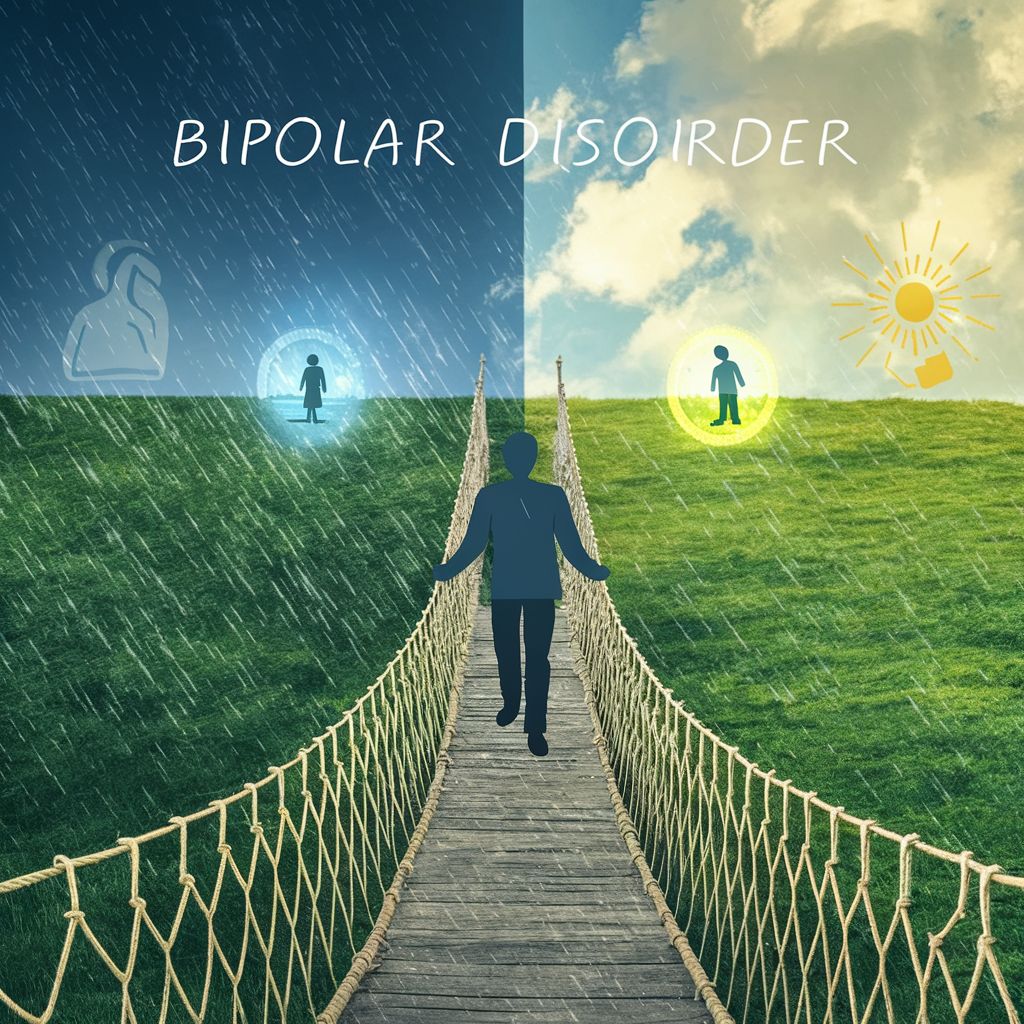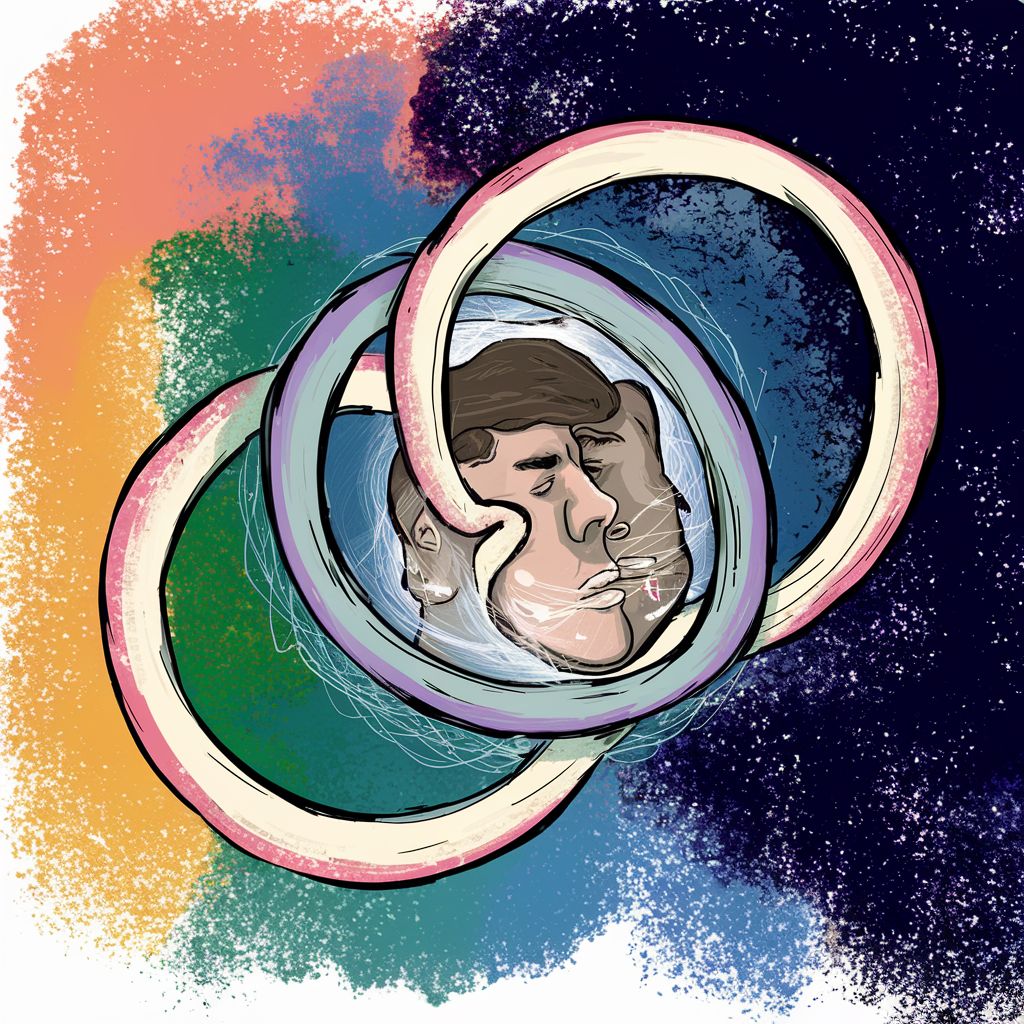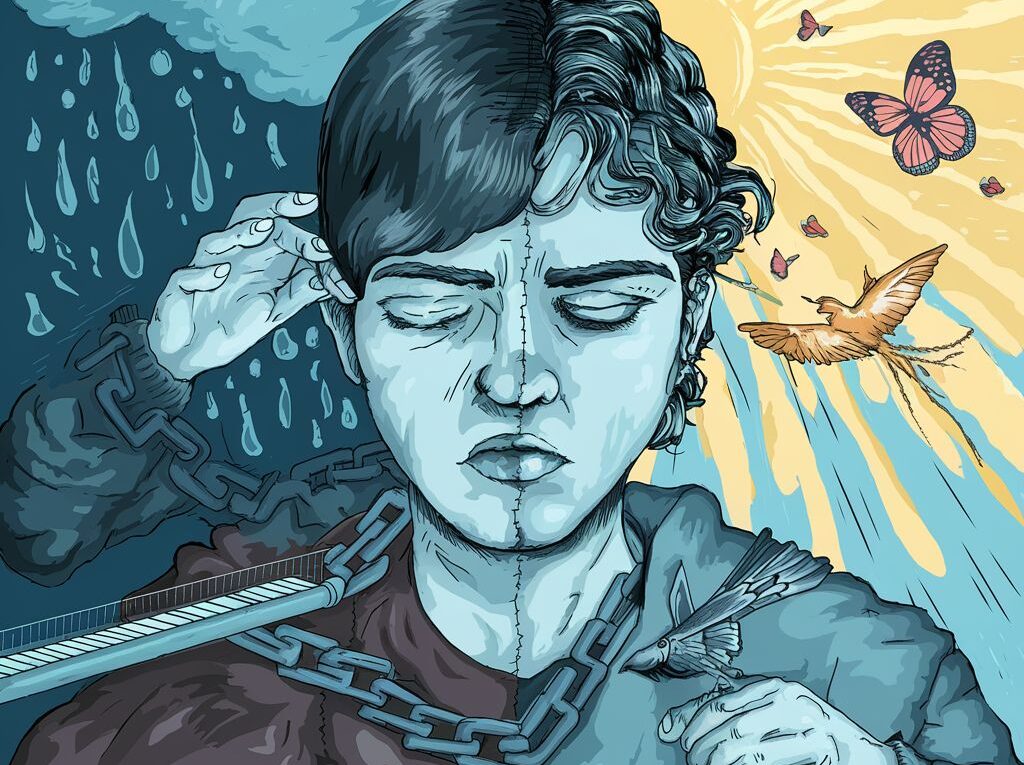Navigating the Complexities of Bipolar Disorder and Suicidal Ideation: Strategies for Management and Prevention
Navigating the Complexities of Bipolar Disorder and Suicidal Ideation: Strategies for Management and Prevention
Read Disclaimer
Explore the complex relationship between bipolar disorder and suicidal ideation, uncovering strategies for effective management and prevention. Learn about medication, therapy, lifestyle modifications, and support networks essential for navigating the challenges of bipolar disorder.
Introduction:
Bipolar disorder is a mental health condition characterized by intense mood swings that range from manic highs to depressive lows. Amidst the challenges posed by bipolar disorder, one of the most concerning issues is the occurrence of suicidal ideation. Understanding the intricate relationship between bipolar disorder and suicidal thoughts is crucial for effective management and prevention. This comprehensive blog aims to explore the complexities of bipolar disorder and suicidal ideation, delving into the underlying mechanisms, risk factors, and strategies for managing the rollercoaster of emotions associated with this condition.

Understanding Bipolar Disorder and Suicidal Ideation:
1. Types of Bipolar Disorder :
Bipolar disorder is not a one-size-fits-all condition. It encompasses various subtypes, including bipolar I disorder, bipolar II disorder, and cyclothymic disorder, each characterized by distinct patterns of mood episodes. These episodes fluctuate between manic, hypomanic, and depressive states.
2. Manic Episodes :
Manic episodes are marked by periods of elevated mood, increased energy, impulsivity, and a heightened sense of grandiosity. While these phases can be exhilarating, they often lead to reckless behavior and impaired judgment, increasing the risk of suicidal ideation and actions.
3. Depressive Episodes :
On the other end of the spectrum are depressive episodes, characterized by profound feelings of sadness, hopelessness, fatigue, and loss of interest in previously enjoyed activities. These episodes frequently coincide with heightened suicidal thoughts and behaviors, as individuals struggle to cope with overwhelming despair and emptiness.
4. Mixed Episodes :
In some instances, individuals with bipolar disorder may experience mixed episodes, where symptoms of mania and depression occur simultaneously. These episodes can be particularly distressing and heighten the risk of impulsive or self-destructive behavior, including suicidal ideation.
5. Underlying Mechanisms :
The link between bipolar disorder and suicidal ideation is complex and multifaceted. Factors such as neurotransmitter imbalances, genetic predisposition, childhood trauma, and co-occurring mental health conditions contribute to an increased vulnerability to suicidal thoughts and behaviors among individuals with bipolar disorder.
Managing the Rollercoaster of Bipolar Disorder:
1. Medication Management :
Pharmacotherapy plays a pivotal role in bipolar disorder treatment, aiming to stabilize mood and reduce the frequency and severity of mood episodes. Mood stabilizers, antipsychotic medications, and antidepressants are commonly prescribed, tailored to individual symptoms and treatment responses.
2. Psychotherapy :
Therapy is an essential component of bipolar disorder management, offering individuals a safe space to explore their emotions, develop coping skills, and identify triggers for mood episodes. Cognitive-behavioral therapy (CBT), interpersonal therapy (IPT), and dialectical behavior therapy (DBT) are among the therapeutic modalities utilized in bipolar disorder treatment.
3. Lifestyle Modifications :
Adopting healthy lifestyle habits can complement medication and therapy in managing bipolar disorder symptoms. Regular exercise, sufficient sleep, balanced nutrition, and stress management techniques contribute to mood stability and reduce the risk of mood swings and suicidal ideation.
4. Social Support :
Building a robust support network is crucial for individuals living with bipolar disorder. Family, friends, and mental health professionals provide validation, empathy, and encouragement during challenging times. Peer support groups, online communities, and educational resources further enhance social connectedness and resilience.
5. Safety Planning :
Developing a personalized safety plan is imperative for individuals experiencing suicidal ideation. This plan outlines coping strategies, support networks, and emergency contacts to be utilized during times of crisis, empowering individuals to navigate difficult emotions and seek help when needed.

Preventing Suicidal Ideation in Bipolar Disorder:
1. Early Intervention :
Timely detection and intervention are paramount in preventing the escalation of suicidal ideation in individuals with bipolar disorder. Regular monitoring of mood symptoms, medication adherence, and participation in therapy facilitate early identification of warning signs and prompt intervention.
2. Education and Awareness :
Increasing public awareness and understanding of bipolar disorder and suicidal ideation is essential for reducing stigma and promoting help-seeking behaviors. Education campaigns, community workshops, and online resources play a vital role in disseminating accurate information and fostering empathy and support.
3. Crisis Intervention :
Access to crisis intervention services is critical for individuals experiencing acute suicidal ideation. Hotlines, mobile crisis teams, and emergency psychiatric care provide immediate support and intervention, mitigating the risk of self-harm or suicide attempts during times of distress.
4. Collaborative Care :
Collaborative care models ensure comprehensive and integrated support for individuals with bipolar disorder. Coordination between mental health professionals, primary care providers, and support services ensures holistic care, addressing both mental health needs and suicidal ideation.
5. Continued Monitoring and Support :
Ongoing monitoring of mood symptoms, treatment adherence, and suicidal ideation is essential for long-term management of bipolar disorder. Regular follow-up appointments with mental health professionals facilitate adjustments to treatment plans, ensuring optimal symptom management and reducing the risk of suicidal behaviors.
Conclusion:
In conclusion, navigating the complexities of bipolar disorder and suicidal ideation requires a multifaceted approach that encompasses understanding, support, and proactive intervention. This comprehensive exploration has shed light on the intricate relationship between bipolar disorder and suicidal thoughts, emphasizing the importance of early detection, effective management strategies, and community support. By addressing the underlying mechanisms, such as neurotransmitter imbalances and genetic predisposition, and implementing a combination of medication management, therapy, lifestyle modifications, and social support, individuals living with bipolar disorder can effectively manage their symptoms and reduce the risk of suicidal behaviors. Additionally, preventive measures such as education, crisis intervention, and collaborative care models play a crucial role in minimizing the impact of suicidal ideation and fostering resilience in individuals with bipolar disorder. Let us continue to prioritize mental health awareness, advocate for accessible and equitable mental health care, and offer empathy and support to those navigating the challenging terrain of bipolar disorder and suicidal ideation.
FAQs with Answers:
Q1: What is bipolar disorder?
A1: Bipolar disorder is a mental health condition characterized by extreme mood swings, including manic highs and depressive lows.
Q2: What are the different types of bipolar disorder?
A2: Bipolar disorder includes several subtypes, such as bipolar I disorder, bipolar II disorder, and cyclothymic disorder, each with distinct patterns of mood episodes.
Q3: What are the symptoms of manic episodes?
A3: Manic episodes may involve elevated mood, increased energy, impulsivity, and grandiosity.
Q4: How do depressive episodes manifest in bipolar disorder?
A4: Depressive episodes are characterized by feelings of sadness, hopelessness, fatigue, and loss of interest in activities.
Q5: What are mixed episodes in bipolar disorder?
A5: Mixed episodes involve symptoms of both mania and depression occurring simultaneously, leading to heightened distress and increased risk of suicidal ideation.
Q6: How is bipolar disorder treated?
A6: Treatment for bipolar disorder typically involves a combination of medication management, psychotherapy, lifestyle modifications, and social support.
Q7: What role does medication play in managing bipolar disorder?
A7: Medications such as mood stabilizers, antipsychotics, and antidepressants are commonly prescribed to stabilize mood and reduce the frequency and severity of mood episodes.
Q8: Can therapy help individuals with bipolar disorder?
A8: Yes, therapy, including cognitive-behavioral therapy (CBT), interpersonal therapy (IPT), and dialectical behavior therapy (DBT), can help individuals develop coping skills, regulate emotions, and identify triggers for mood episodes.
Q9: How important is social support in managing bipolar disorder?
A9: Social support from family, friends, and mental health professionals is crucial for individuals living with bipolar disorder, providing validation, empathy, and encouragement during difficult times.
Q10: What is a safety plan, and how can it help in bipolar disorder?
A10: A safety plan outlines coping strategies, support networks, and emergency contacts to be used during times of crisis, empowering individuals to manage suicidal ideation and seek help when needed.

Thank you for your sharing. I am worried that I lack creative ideas. It is your article that makes me full of hope. Thank you. But, I have a question, can you help me?
Your point of view caught my eye and was very interesting. Thanks. I have a question for you.
Your article helped me a lot, is there any more related content? Thanks!
I don’t think the title of your article matches the content lol. Just kidding, mainly because I had some doubts after reading the article.
Thank you for your sharing. I am worried that I lack creative ideas. It is your article that makes me full of hope. Thank you. But, I have a question, can you help me?
I don’t think the title of your article matches the content lol. Just kidding, mainly because I had some doubts after reading the article.
Your article helped me a lot, is there any more related content? Thanks!
Thanks for sharing. I read many of your blog posts, cool, your blog is very good.
Thanks for sharing. I read many of your blog posts, cool, your blog is very good. http://4410251.cryptostarthome.com
Your article helped me a lot, is there any more related content? Thanks!
Your article helped me a lot, is there any more related content? Thanks!
Your article helped me a lot, is there any more related content? Thanks!
Your article helped me a lot, is there any more related content? Thanks!
I don’t think the title of your article matches the content lol. Just kidding, mainly because I had some doubts after reading the article.
I don’t think the title of your article matches the content lol. Just kidding, mainly because I had some doubts after reading the article.
I don’t think the title of your article matches the content lol. Just kidding, mainly because I had some doubts after reading the article. https://www.binance.info/en-IN/register?ref=UM6SMJM3
Thanks for sharing. I read many of your blog posts, cool, your blog is very good. https://www.binance.com/join?ref=P9L9FQKY
Can you be more specific about the content of your article? After reading it, I still have some doubts. Hope you can help me. Регистрация в binance
Thank you for your sharing. I am worried that I lack creative ideas. It is your article that makes me full of hope. Thank you. But, I have a question, can you help me?
Your point of view caught my eye and was very interesting. Thanks. I have a question for you.